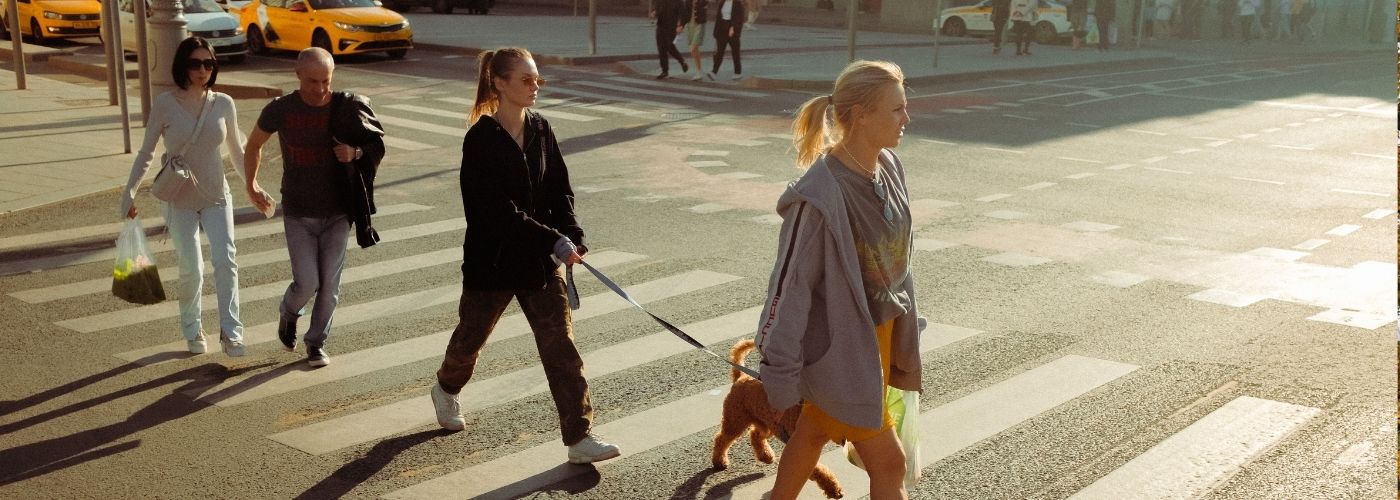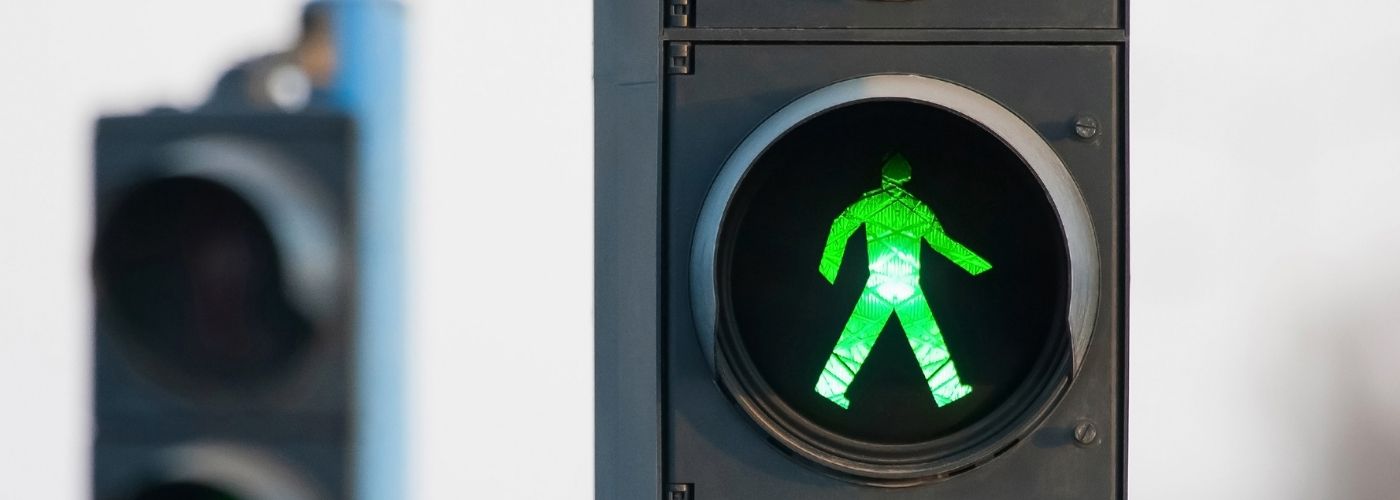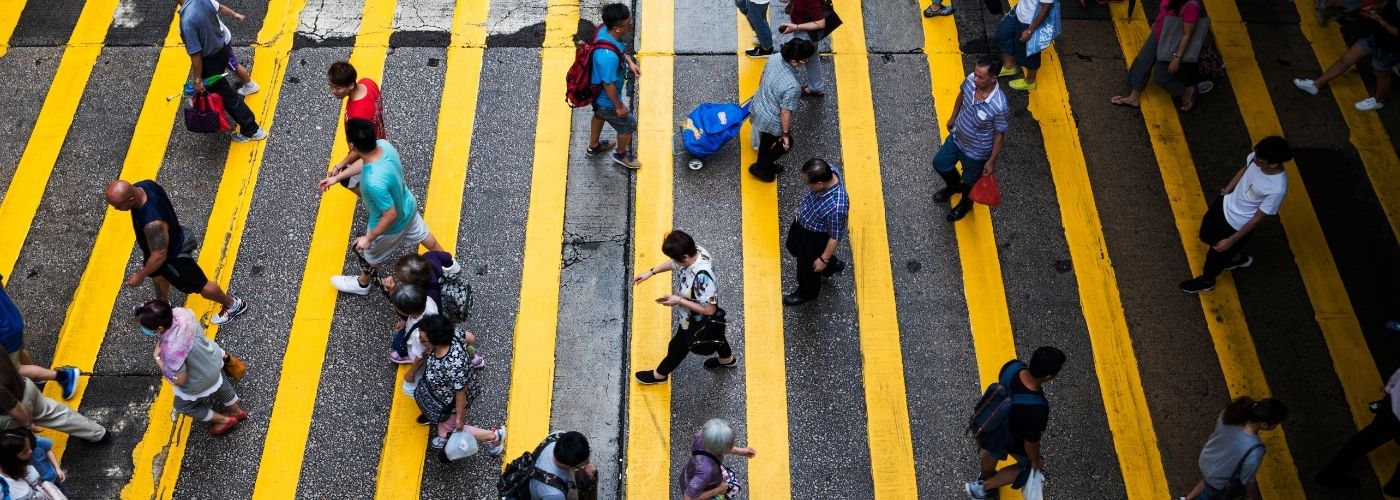Even during the hottest days in Las Vegas, pedestrians are a common sight on the streets and sidewalks. Whether they are tourists exploring the famous Las Vegas Strip or locals commuting to work, pedestrians play a vital role in the city’s daily life. One question that often arises is whether pedestrians always have the right of way. In this article, we’ll look at some important guidelines that can help you understand pedestrian right of way in Las Vegas, Nevada.
What Is Right Of Way?
In traffic and pedestrian laws, the right of way refers to the legal right of a person or vehicle to proceed first in a specific situation. It helps create a hierarchy of movement, ensuring that traffic flows smoothly and safely.
For example, when you approach a four-way stop sign, the right of way rule dictates that the vehicle that arrives at the intersection first has the right to proceed before others. This clear rule minimizes confusion, helps prevent accidents, and can assist in establishing liability in case of a vehicle accident or pedestrian injury.
When Do Pedestrians Have A Right Of Way?
In many situations, pedestrians in Las Vegas have the right of way, though you should always be watchful for carelessness or recklessness on the road. Here are some common scenarios where pedestrians may expect to be given the legal right of way:
Crosswalks: When a pedestrian is within a marked crosswalk or at an unmarked crosswalk at an intersection, they have the right of way. Drivers must come to a complete stop to allow pedestrians to safely cross the road.
Traffic Signals and Walk Signals: When pedestrians obey traffic signals and crosswalk signs, they have the right of way. This means that when the “walk” signal is on, pedestrians can cross the road safely, and drivers must yield.
Turning Vehicles: If a vehicle is making a turn at an intersection, it must yield the right of way to pedestrians in the crosswalk. This applies to both left and right turns.
School Zones and School Buses: In school zones and around school buses with flashing red lights and stop signs extended, drivers must yield to pedestrians, especially children.
Blind Pedestrians: When a pedestrian is visually impaired and guided by a service animal or white cane, drivers must exercise extreme caution and yield the right of way.
Remember that responsible driving and close attention to right of way rules is important to protecting yourself and others while on the road. Accidents, especially multiple car accidents, can result in not just harm to you or others but complex and costly proceedings as well.
When Don’t Pedestrians Have The Right Of Way?
While pedestrians often have the right of way in Las Vegas, there are situations where they do not. Understanding these exceptions is crucial for ensuring safety on the road. Here are instances when pedestrians may not have the right of way:
Jaywalking: Jaywalking refers to pedestrians crossing the street outside of designated crosswalks or against traffic signals. In Nevada, jaywalking is illegal, and pedestrians do not have the right of way when engaging in this unsafe behavior.
Crossing Against Traffic Signals: Pedestrians must obey traffic signals. Crossing against a red signal or a “do not walk” sign means they do not have the right of way.
Entering a Roadway Unsafely: Pedestrians must not enter the road suddenly or in a way that makes it impossible for drivers to stop safely. In such cases, they may not have the right of way.
Impairment: If a pedestrian is impaired by alcohol or drugs and is walking in a way that poses a danger to themselves or others, they may not have the right of way. Just as drunk driver accidents can result in extremely serious consequences, pedestrians also can have a responsibility to not endanger themselves or others.
Do Pedestrians Have The Right Of Way When Jaywalking In Nevada?
No, pedestrians do not have the right of way when jaywalking in Nevada, including Las Vegas and surrounding communities. Jaywalking is not only against the law but also incredibly risky. When pedestrians choose to jaywalk, they put themselves and drivers at risk of accidents and injuries.
In Las Vegas, the law requires pedestrians to use crosswalks and obey traffic signals. Jaywalking can result in fines and citations for pedestrians. Moreover, if a jaywalking pedestrian is involved in an accident, they may share liability for their injuries.
It’s essential for pedestrians to prioritize safety and use designated crosswalks and obey traffic signals. This not only helps prevent accidents but also ensures that they have the legal right of way when crossing the road.
Pedestrians and drivers share the responsibility for road safety, and it’s crucial for both to adhere to traffic laws and exercise caution to prevent accidents. Understanding and respecting right of way rules is a vital step towards safer roadways for everyone.




Filing A Case For An Injury At A Water Park in Las Vegas
Filing a case for an injury at a water park in Las Vegas is not
Jul
How To Sue A Las Vegas Nightclub For Your Injury
If you’ve found yourself on the receiving end of negligence or misconduct at a Las
Jul
Steps To Filing A Lawsuit Against A Casino
Walking into a vibrant casino, with its dazzling lights and the promise of fortune lingering
Jun
How To Handle Ride Share Accidents in Las Vegas
Las Vegas is a hotspot for ride-sharing services like Uber and Lyft. While these convenient
Jun